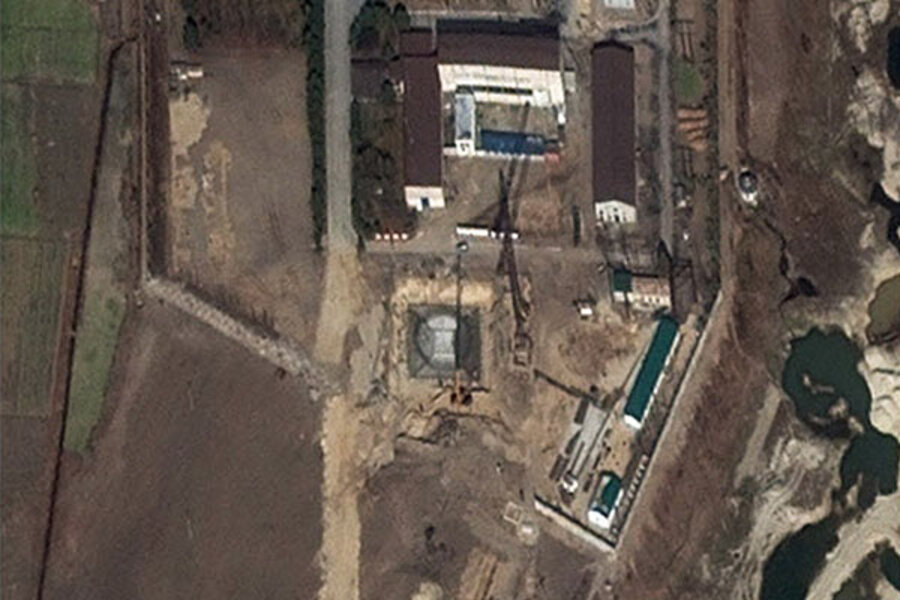US envoy arrives in Seoul amid 'stunning' report on new North Korea nuclear facility
Loading...
• A summary of global reports on security issues.
US Special Representative for North Korea Stephen Bosworth arrived in Seoul Sunday to meet with South Korean officials to discuss how resume six-party talks on denuclearizing North Korea.
His visit comes as a US scientist posted a report Saturday describing a “stunning,” highly sophisticated and newly built North Korea nuclear facility he visited recently.
Mr. Bosworth will meet with South Korea’s chief nuclear negotiator and foreign minister Monday, before traveling to Tokyo the same day and to Beijing Tuesday to speak with each country’s counterparts for North Korean issues, the Korea Herald reports.
IN PICTURES: Nuclear power around the world
The stalled six-party talks include the North Korea, the US, South Korea, Japan, Russia, and China, with Beijing advocating resuming talks and speaking with North Korea as a way to keep it from acting rashly. North Korea walked out of talks last year but has said that it wants to resume them now.
Analysts call the disclosure of the new nuclear facility part of North Korea’s “time-honored” tactics to gain leverage in these negotiations, according to Reuters, which adds that experts also say that international sanctions are deeply hurting the North Korean economy.
It’s hard to confirm or deny North Korean claims on its nuclear capability, which it says is for civilian electrical purposes, because it expelled international inspectors last year. But many in the US and other nations involved in the negotiations are “wary” of falling into the pattern that has confounded past governments, in which Kim Jong Il’s government “made threats and then was rewarded with cash and other benefits not to carry them out,” the Washington Post reports.
"We have consistently insisted that any talks must be real negotiations over its nuclear weapons program," a senior Obama administration official said in an e-mail to the Post.
Report from US scientist
The report from American nuclear scientist Siegfried Hecker, a professor at Stanford University, describes a recent visit to a uranium-enrichment facility that he described as “astonishingly modern” and able to fit into any American processing plant.
“Instead of seeing a few small cascades of centrifuges, which I believed to exist in North Korea, we saw a modern, clean centrifuge plant of more than a thousand centrifuges, all neatly aligned and plumbed below us,” he wrote in his report, according to the Associated Press.
Mr. Hecker also said that the plant seemed to be for civilian use but looked like they could be “readily converted” to facilities to produce highly enriched uranium bomb fuel.
American officials know the plant did not exist in 2009, when inspectors were thrown out, the New York Times reports, adding that the speed with which it was built suggests the isolated and desperately poor country had foreign help.
Bolstering appearances
The Associated Press speculates that in addition to trying to resume the international nuclear disarmament-for-aid talks, North Korean might have chosen to show the formerly secret plant to Hecker now because it looks to strengthen its military appearance as the aging Kim Jong Il is preparing to transfer power to a younger, untested son.
North Korea hosted the biggest parade in its history in October to show off Kim Jong Il’s third son, Kim Jong-un, as heir to his power, the Christian Science Monitor reported.
Whatever the reasons for showing the plant now, the Council on Foreign Relations notes that North Korea’s presentation and use of its nuclear program increases the perception that nuclear capabilities serve as a bargaining chip:
North Korea became the first state to withdraw from the Nuclear Nonproliferation Treaty (NPT) and test nuclear devices: the first outright failure of the nuclear nonproliferation regime and an ominous development. Iran, though still a nominal party to the NPT, has long been in violation of its nonproliferation obligations during its quest to become a nuclear power. ... [T]hey have generated pressure on rivals to look to offsetting capabilities. They may also lead some to perceive that nuclear weapons can provide status and bargaining leverage.





